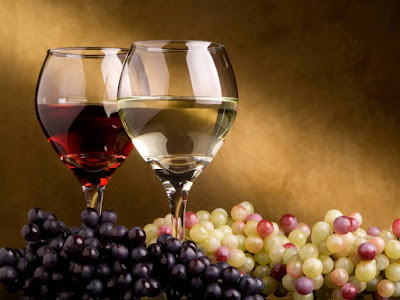Varietals & Blends
Varietals and Blends
People’s knowledge of wine grape names (e.g., Pinot Noir and Chardonnay) is a relatively new phenomenon that resulted from the growth over the last 30 years in the availability, quality and popularity of “New World” wines. I also talked about how this relatively new knowledge of grape names has sparked some interesting discussions around blended wines (wines made from several different grape types) vs. varietal wines (wines made almost entirely from a single grape variety).
A lot of people wonder which is better. The quick answer is they’re both good.
The Difference between Blended and Varietal Wines
What’s the difference in taste? Blended wines can be a bit softer and smoother than varietal wines. An intense Cabernet, for example, can be softened beautifully by the addition of Merlot.
Some wine makers are softening their single-varietal wines by combining grapes from different regions.
Increasingly, you can find variety blends, regional blends or a combination of the two.
Should We Care?
If you like a blended wine, drink it. Blended wines are not “second class” citizens. However, if you wish to extend your wine knowledge and thus enhance your wine experience, you should try varietal wines on a regular basis. It’s hard to get to know the characteristics of Cabernet Sauvignon, for example, when you drink only Cab/Merlot blends. You never know if what you’re tasting is coming from the Cab or the Merlot.
Here are the 5 facts you need to know
1. Difference between varietals and blends: A standard varietal like Malbec, Chardonnay etc., is made from the same type of grape. Sometimes winemakers will use grapes from different plots of a vineyard or different regions for a varietal, but they are all the same type of grapes. In the U.S. a varietal needs to be 75 percent of one type of grape, while in Europe it's generally 80 percent and in Argentina it's 85 percent. It's possible for wineries to add other grapes to a varietal to enhance the elements and still call it a single varietal wine.
Blends are what their name suggests. They typically consist of at least 40-50 percent of one type of grape and a smaller mix of two or more other grapes.
2. Blending makes wines more complex: Blending is used to maximize the expression of a wine. It can enhance aromas, color, texture, body and finish, making it a more well-rounded and complex wine. If a wine doesn't have a strong scent, for example, a winemaker can add five percent of a more potent smelling grape and can experiment with different types of varietals coming from other vineyards. They could have been aged in oak barrels, fermented in various kinds of vessels or just harvested in different phases of ripeness.
In Argentina, the heart of most blends is Malbec. Merlot can be used to give the wine a better aroma and make it seem fresher or smoother. Cabernet Franc or Sauvignon are often added for structure or tannin concentration to make a more powerful wine. Creating the perfect blend also depends on the characteristics of the year and the expression of each grape. The possibility for combinations that result in a quality blend are endless.
3. Some single varietals are made for blending: Winemakers will often make a barrel of Malbec, Cabernet Sauvignon, Merlot or other wines solely for the purpose of blending. As the grapes are being harvested, a winemaker determines what they think will be the best formula for a blend. Allotting specific barrels for blending allows them to experiment in finding the best types of mixtures. The idea is to highlight each grape's strength and complement the other grapes being used in the blend.
4. The timeline for mixing wines varies: Winemakers mix blends in a steel tank. Lower cost blends are rarely aged in oak and higher cost blends are generally aged in oak. Some winemakers put blended wines into an oak barrel half way through the aging process, while others put the wines together one to two weeks before bottling. Some try letting the wines ferment together from start to finish. Again, the goal is to develop the best of everything in the wines and each winery determines what approach works best for them.
5. Some grapes aren't used for blending: White wines tend to be pure varietals. However, there are some exceptions, particularly in certain regions in Europe where two or more white grapes are used. Pinot Noir is a type of grape that is rarely blended. That is why when you are having a Burgundy it will likely be a 100 percent Pinot Noir.
Wine is all about enjoyment. Discover what you like and celebrate that. Try new wines all the time to expand your repertoire.
Source:





Comentarios
Publicar un comentario